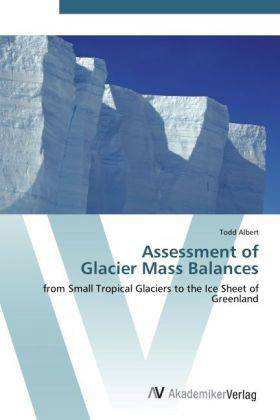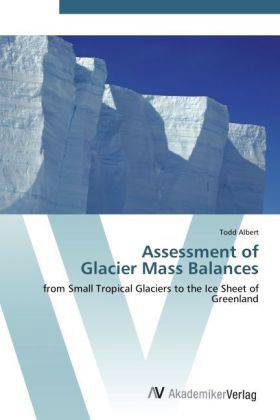
- Afhalen na 1 uur in een winkel met voorraad
- Gratis thuislevering in België vanaf € 30
- Ruim aanbod met 7 miljoen producten
- Afhalen na 1 uur in een winkel met voorraad
- Gratis thuislevering in België vanaf € 30
- Ruim aanbod met 7 miljoen producten
Zoeken
Assessment of Glacier Mass Balances
from Small Tropical Glaciers to the Ice Sheet of Greenland
Todd Albert
Paperback | Engels
€ 68,95
+ 137 punten
Omschrijving
Revision with unchanged content. The effects of climate change are most clearly reflected in the dynamic changes in Earth's ice cover. While the distribution of ice on Earth has fluctuated on all time scales, the recent, unprecedented warming of the last century is leading to an apparent collapse of much of the remaining glaciers and ice caps on the planet. What is the best way to study this ice cover? How can we best determine what changes are occurring and their causes? This book is addressed to researchers in the field of glaciers and climate that are interested in methods to study the ever-changing cryosphere. From the world's largest tropical ice cap to the Greenland Ice Sheet, this book takes you on a journey across the world and through several different methods of gleaming information from the ice. In the tropics, remote sensing classi-fication techniques are applied to the Quelccaya Ice Cap to present a 40-year history of the retreat of glaciers there and some analysis of the linkages to climate. On the Greenland Ice Sheet, field measurements are employed to create an elevation profile of the mass balance components of the glacier. Finally, three mass balance models are investigated in their applicability to that profile with some surprising results.
Specificaties
Betrokkenen
- Auteur(s):
- Uitgeverij:
Inhoud
- Aantal bladzijden:
- 164
- Taal:
- Engels
Eigenschappen
- Productcode (EAN):
- 9783639454192
- Verschijningsdatum:
- 21/08/2012
- Uitvoering:
- Paperback
- Formaat:
- Trade paperback (VS)
- Afmetingen:
- 152 mm x 229 mm
- Gewicht:
- 249 g

Alleen bij Standaard Boekhandel
+ 137 punten op je klantenkaart van Standaard Boekhandel
Beoordelingen
We publiceren alleen reviews die voldoen aan de voorwaarden voor reviews. Bekijk onze voorwaarden voor reviews.








